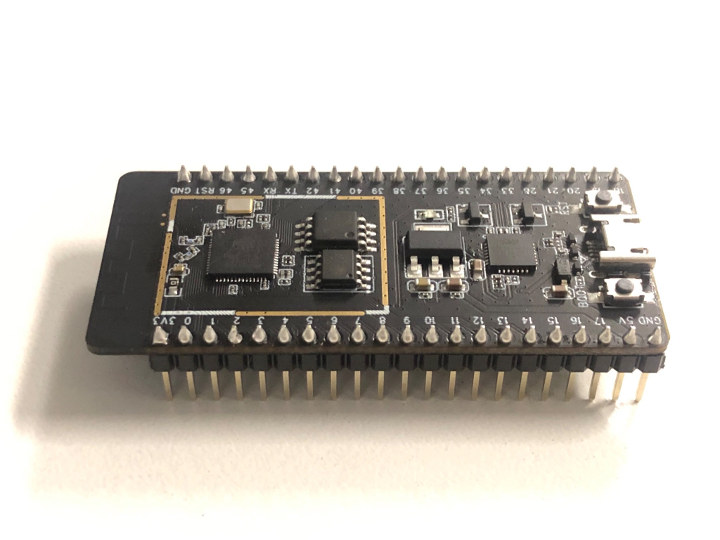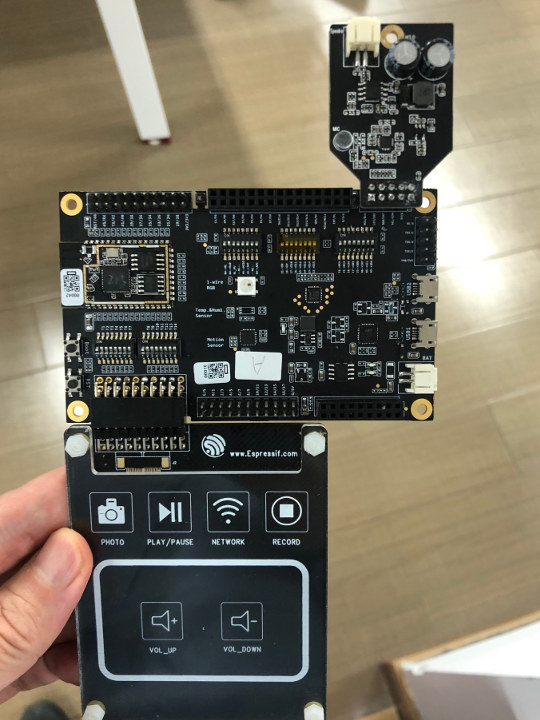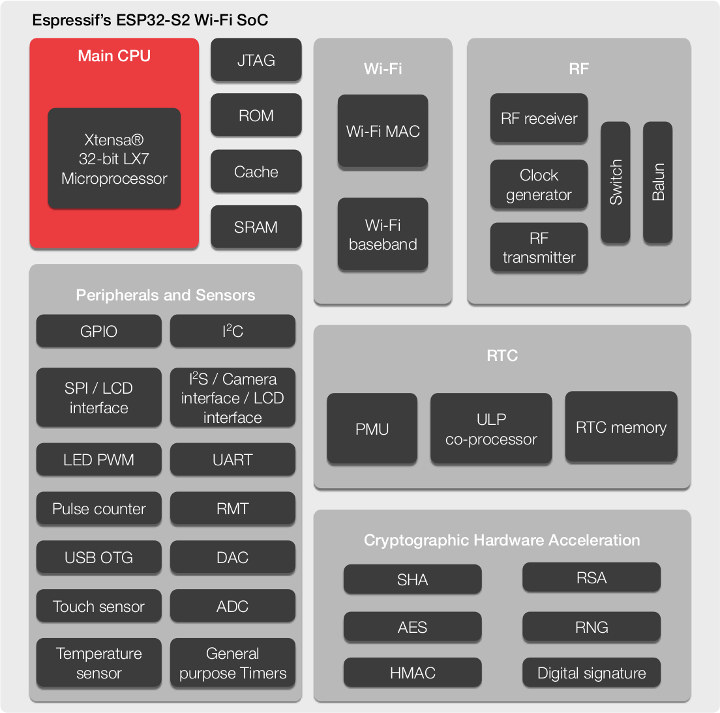Last may Espressif Systems unveiled ESP32-S2 secure WiFi processor with a single Xtensa LX7 core clocked at 240 MHz, and the first ESP32 processor to come with a built-in USB (OTG) interface, as well as some new features such as WiFi Time-of-Flight (ToF), hardware security, LCD RGB & camera interfaces, and more. Note that contrary to other ESP32 processors launched so far, ESP32-S2 does not support Bluetooth.
ESP32-S2 Datasheet
The processor is still not available, but there has been some interesting development in recent weeks. First the datasheet (PDF) has been released, so we’ve got to check more technical details including the processor diagram below.
The main specifications have not changed, so I won’t reproduce them here, and you can check out ESP32-S2 announcement for specs.
ESP32-S2 Development Boards
The first ESP32-S2 development boards are also available… in Espressif Systems’ offices that is, but not quite publicly.

The board above is based on ESP32-S2 processor with a 56-pin package, and one oddity is the USB to TTL chip. One commenter in Twitter explains that’s because USB is still being worked on for ESP32-S2, so they have to use an external chip for now, which may not be there in the final hardware, or maybe they want to reserve the USB interface for other purposes. There are two 21-pin I/O headers for expansion, but apart from the power signal and reset pins, the only photo available does not reveal which pins are routed. There also seems to be both SPI flash and SPI RAM on the board.

If you have no time for “tinkering”, and want to do some more serious development, Espressif Systems has a full-featured ESP32-S2 evaluation kit with touch buttons and audio (mic) expansion boards.
There’s still no reference to ESP32-S2 in ESP-IDF source code nor the documentation website, so it may take a while before the boards or a variants become available. The company recently sent ESP32-S2 processor samples to developers as they had 50 engineering samples for this purpose.

Jean-Luc started CNX Software in 2010 as a part-time endeavor, before quitting his job as a software engineering manager, and starting to write daily news, and reviews full time later in 2011.
Support CNX Software! Donate via cryptocurrencies, become a Patron on Patreon, or purchase goods on Amazon or Aliexpress





